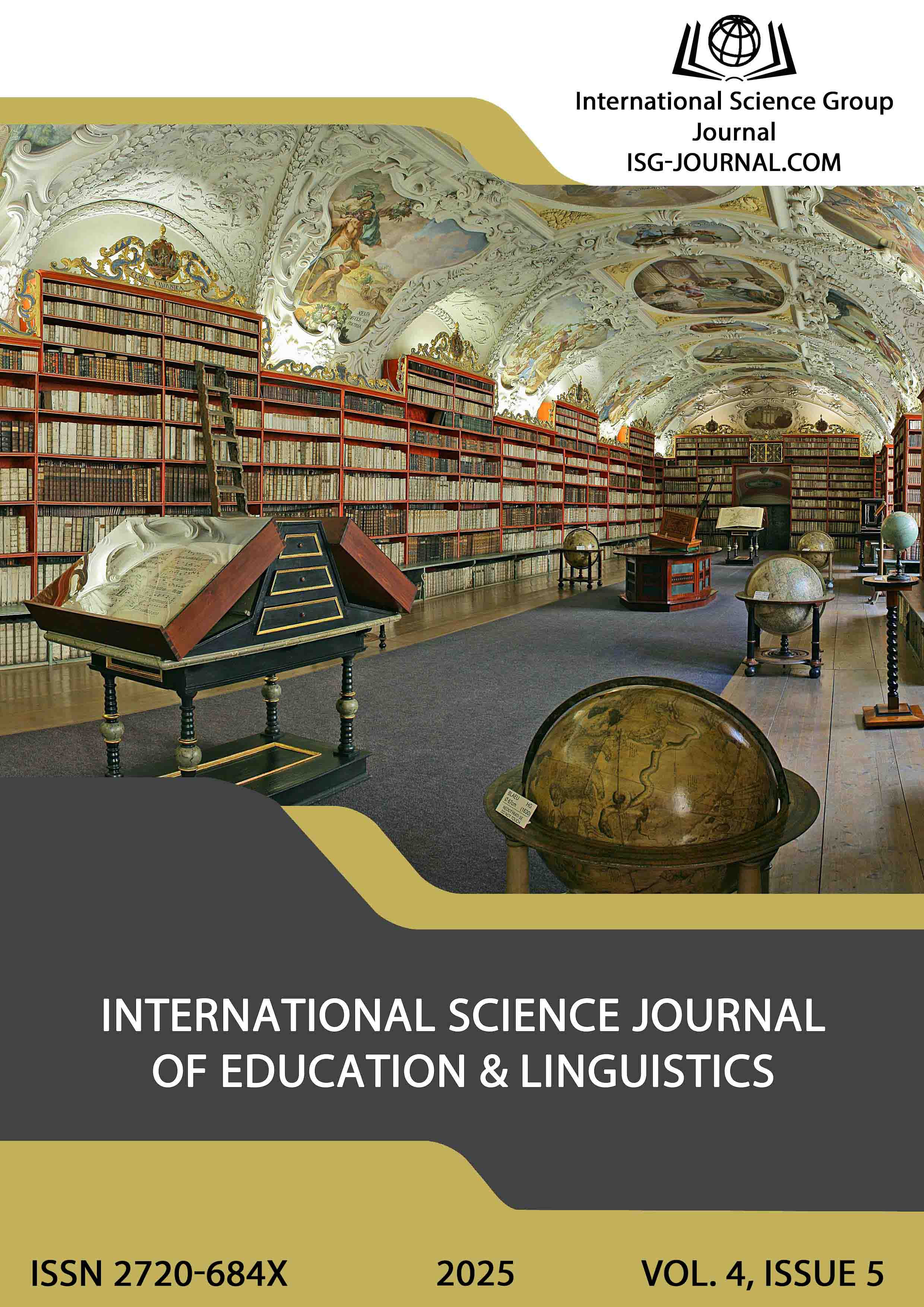Interlingual interference and cultural adaptation: strategies for teaching Spanish to Turkish-speaking students
DOI:
https://doi.org/10.46299/j.isjel.20250405.03Keywords:
interlingual interference, contrastive linguistics, grammatical competence, intercultural communication, teaching methods, pragmatic adaptation, didactic strategiesAbstract
The article is devoted to the analysis of methodological strategies for teaching Spanish to Turkish-speaking students in conditions of interlingual interference and cultural incompatibility. Taking into account the typological distance between Turkish and Spanish, the authors examine the specific grammatical difficulties that arise in the process of learning Spanish, particularly in the areas of gender categorisation, article usage, word order, and the system of verb tenses and modes. The emphasis is on negative interlingual interference as a key factor in the formation of erroneous speech patterns. The author justifies the use of contrastive analysis as an effective didactic tool in predicting and overcoming typical errors. The article offers a comprehensive set of methodological solutions aimed at overcoming typical interference difficulties in the process of learning Spanish by Turkish speakers. In particular, the effectiveness of visualising grammatical structures as a means of cognitive simplification of complex morphosyntactic categories is substantiated. The principle of gradual complication of grammatical material is implemented through the gradual introduction of new structures based on those already learned, which corresponds to the concept of complexity gradation and avoids overloading the student's short-term memory. An important methodological component is the integration of authentic sources, which ensures the teaching of grammar in a real communicative context. The importance of communicatively oriented exercises that stimulate grammatical reflection is also emphasised. A separate methodological line is the intercultural component, which includes modelling communication situations with an emphasis on socially relevant formulas of politeness, variability of forms of address, as well as analysis of culturally marked non-verbal codes characteristic of Spanish and Turkish linguistic cultures. Within the framework of a comprehensive approach, the combination of structural awareness, interlinguistic sensitivity and sociocultural competence is considered a prerequisite for the effective acquisition of Spanish by Turkish-speaking learners. The theoretical provisions and practical recommendations presented have the potential for interdisciplinary application in the fields of linguistics, intercultural pedagogy and applied linguistics.References
Aliaga, J., & Soler, E. (2021). Contrastive grammar teaching and multilingual competence: A case study with Turkish speakers learning Spanish. Languages, 6(3), Article 148. https://doi.org/10.3390/languages6030148
Council of Europe. (2020). Common European Framework of Reference for Languages: Learning, teaching, assessment – Companion volume. Strasbourg: Council of Europe. https://www.coe.int/en/web/common-european-framework-reference-languages
DeKeyser, R. (2020). Task-based language teaching and the development of L2 grammar in classroom settings. The Modern Language Journal, 104(S1), 49–63.
Gómez García, M. J. (2021). Errores gramaticales frecuentes en aprendientes de ELE turcoparlantes: Un análisis contrastivo. MarcoELE: Revista de Didáctica Español Lengua Extranjera, (33), 45–62. https://marcoele.com/errores-aprendientes-ele-turco
Gürel, A., & Yılmaz, E. (2023). Cross-linguistic influence and L2 grammar acquisition: Evidence from Turkish-Spanish bilingual learners. Second Language Research, 39(2), 175–198. https://doi.org/10.1177/02676583221079967
Kadioglu, Z., & Riera, A. (2022). Interferencias lingüísticas en aprendientes turcoparlantes de español: Retos gramaticales y estrategias de corrección. Revista Nebrija de Lingüística Aplicada, 16(1), 112–129. https://revistas.nebrija.com
Kramsch, C. (2021). Language as symbolic power. Cambridge: Cambridge University Press.
Krashen, S. D. (1981). Second language acquisition and second language learning. Oxford: Pergamon Press.
Lado, R. (1957). Linguistics across cultures: Applied linguistics for language teachers. Ann Arbor: University of Michigan Press.
López-Santiago, S. (2020). La competencia intercultural en la enseñanza de ELE: propuestas desde la comunicación no verbal. Didáctica. Lengua y Literatura, 32, 135–152. https://doi.org/10.5209/dida.68499
Odlin, T. (2022). Language transfer: Cross-linguistic influence in language learning (Updated ed.). Cambridge: Cambridge University Press.
Şahin, D., & Morales, J. (2023). Digital tools in teaching Spanish to speakers of Turkish: Improving grammatical awareness through visual support. Journal of Technology and Language Education, 5(1), 27–44. https://jtle.org/current-issue
Weinreich, U. (1953). Languages in contact: Findings and problems. The Hague: Mouton.
Yılmaz, M., & Fernández Ramírez, M. C. (2020). Cultura, cortesía y ELE: Estrategias para enseñar la pragmática sociocultural a alumnos turcoparlantes. RedELE, (32), 1–20. https://www.educacionyfp.gob.es/redele
Yılmaz, M., & López-Santiago, S. (2023). Teaching Spanish to Turkish speakers: Challenges and cultural nuances. Journal of Applied Linguistics and Language Research, 10(2), 112–128.
Downloads
Published
How to Cite
Issue
Section
License
Copyright (c) 2025 Iryna Vitaliivna Prushkovska, Marina Igorivna Moreva

This work is licensed under a Creative Commons Attribution 4.0 International License.





